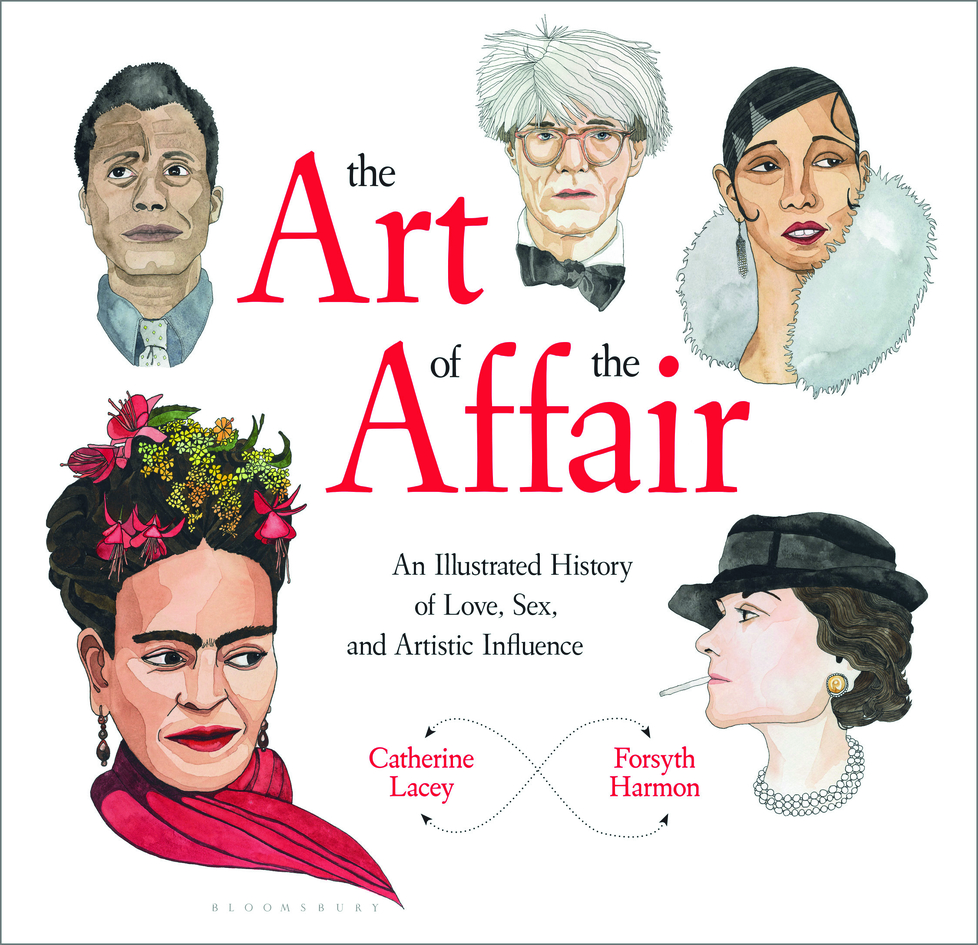All Your Favorite Writers and Artists Were Constantly Fucking
A new book charts out the often messy love lives of famous artists, writers, and creative types.
A new book charts out the often messy love lives of famous artists, writers, and creative types.
This article originally appeared on VICE US.
I might be hanging out with the wrong people, but it seems like artists of the past were much sexier. Maybe it's because so many of them congregated in Paris, a city that retains its romantic allure long after others (New York, Berlin) usurped its place as hangouts for the world's writers and painters and photographers. Maybe it's because the old system of wealthy benefactors allowed for more freedom than today's toxic combination of late capitalism and viral social media. Or maybe it's because the effect of history is to draw out drama at the expense of vast examples of mundanity, and the "creatives" of today will appear to have lived just as exciting lives as Simone de Beauvoir or Orson Welles. Whatever the reason, the biographies of 20th-century artists—the letters, the beguiling muses, the more or less agreed-upon non-monogamous trysts—challenge even the most cynical to resist the glamour of sepia-toned gossip.
The Art of the Affair: An Illustrated History of Love, Sex, and Artistic Influence, a new short book written by novelist Catherine Lacey and illustrated by artist Forsyth Harmon, encourages the impulse toward this nostalgia. In it, Lacey and Harmon compile "an illustrated history of love, sex, and artistic influence" into neat snippets about the connections shared among a smattering of 20th-century artists, writers, musicians, and the like. There are the usual suspects—Picasso, Hemingway, Frida Kahlo, Anaïs Nin, Henry Miller—as well as lesser-known figures like Romaine Brooks, Léonard Tsuguharu Foujita, and Beauford Delaney, all of whom Lacey says she only discovered while researching the book. (Notably absent are the Bloomsbury Group and Virginia Woolf, whose love letters with Vita Sackville-West are just as much fodder for wistful literary history blog posts as the stories of Miller and Nin or de Beauvoir and Jean-Paul Sartre.)

Attempting to follow the threads of all the relationships collected here—many of which are left hanging or severed too soon—is a futile enterprise, likely because of the book's dabbling scope; over email, Lacey (who is an occasional VICE contributor) told me she hopes readers will use The Art of the Affair as "an introduction to the interconnectivity of individual artists and disparate art forms." But those looking for what she calls "highbrow trivia" will not be disappointed, either. Some examples: Greta Garbo and the underappreciated playwright Mercedes de Acosta were madly in love—"trips together, trysts on the beach, naked portraits"—but when Garbo wouldn't publicly identify as a lesbian, de Acosta had an affair with Marlene Dietrich. Madonna and Jean-Michel Basquiat had a fling, but it was so acrimonious that he made her return the paintings he'd made her, and then he covered them in black. The poet Robert Lowell died in a taxi on his way to the apartment of his ex-wife, the legendary literary critic Elizabeth Hardwick; he was supposedly "clutching a Lucian Freud portrait" of his third wife, the British writer Lady Caroline Blackwood, who had been married to Freud about 20 years earlier.
Ah, the good old days—who has artistically legitimate paintings of their lovers anymore, much less clutches them in death? Many of the stories in The Art of the Affair sound at first like vintage tabloid gossip, but they manage to quickly transcend that register. Even though not all of the connections and rivalries Lacey sketches are romantic, they are all forged between two (or, often, more) extraordinarily thoughtful individuals who can eloquently explain their insatiable need to fuck a Mysterious Blonde Poet. To an artist, or at least the kind of artist I like best, lust is never biology—it's essence. "Somehow it's just gossip if people are alive," Lacey says, "but once someone's dead, it's history. It's part of the lens through which we can understand their work."
Many of the stories in The Art of the Affair sound at first like vintage tabloid gossip, but they manage to quickly transcend that register.
Still, the decision to focus on artists' biographies rather than their output is a fraught one; many have argued that an artist's life should be completely separate from their work. (People are particularly inclined toward this argument when an artist they like espouses questionable or horrible morals.) Some of the creative people featured, Lacey notes in the introduction, were careful to cover their tracks, whether because they faced persecution for their race or sexual orientation or simply because they wanted to maintain their privacy. (In his journals, the essayist Edmund Wilson used pseudonyms for his lovers, though historians have still been able to uncover a few: He lost his virginity to the poet Edna St. Vincent Millay, was one of Anaïs Nin's conquests, and married the novelist Mary McCarthy, who herself had a notable affair with the art critic Clement Greenberg.) But, as Lacey told me, "To act as if work is created in a vacuum or by some entity unaffiliated with the life of the artist seems to be a way to turn artists into idols or gods, which they're not."
According to Lacey, where you run into problems is not when you collect trivia about a historical figure, but when you think you know them because of it. In the introduction, she writes, "What is so compelling about these connections, ultimately, is their unknowability," and in our email interview, she said, "As I compiled these stories, I became increasingly nosey—I was never satisfied, never felt like I had really found the letter or anecdote or biographical detail that really made me understand who this artist or writer really was when no one was looking."

Catherine Lacey and Forsyth Harmon. Illustration by Forsyth Harmon/courtesy of Bloomsbury
This was, in turn, where I ran into problems with the book, which, at 86 pages, doesn't make a case for any of its many subjects as "unknowable"—much more has to be written before that distinction fits. "Unknowability" is a conceptual dead end—it serves as a fast track to a neat, college-philosophy-student conclusion: Lacey clarifies that "even when we think we know everything we can about two people—through their books, letters, paintings, photographs, and journals—we will never know what they really saw when they looked at each other." This is true of everyone—not just dead artists—and indeed even couples deeply in love will never really know what the other sees when they look at each other. To mention unknowability in this context feels like a cop-out, especially because one of central services of art is that it communicates connections and ideas from one mind to another.
What's compelling about the snapshots of relationships portrayed in The Art of the Affair is not that they are impossible to truly understand, but that they open up the possibilities of further understanding, the invitation to advance beyond the fun romantic nostalgia that draws us to these stories. Like Lacey, I had never heard of the "brooding" painter Romaine Brooks before, but I was immediately attracted to the quippy tidbits Lacey had chosen to include about her: The lover of the prolific, promiscuous writer Natalie Clifford Barney for more than 50 years, Brooks said "she slightly preferred being with Natalie to being alone, and preferred being alone to being around almost anyone else." I assumed that this person must have made paintings that I would like, and after a quick Google search, I saw I was right. Brooks's gray portraits of purplish, mystical women are beguiling and provocative—and it was her love life that introduced them to me.
Follow Lauren Oyler on Twitter.
The Art of the Affair: by Catherine Lacey and Forsyth Harmon is available in bookstores and online.
https://www.vice.com/en_uk/article/all-your-favorite-writers-and-artists-were-constantly-fucking?utm_content=buffer15c03&utm_medium=social&utm_source=twitter.com&utm_campaign=buffer
posted by Satish Sharma at
13:41
![]()

0 Comments:
Post a Comment
Subscribe to Post Comments [Atom]
<< Home